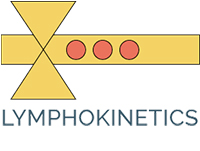The skin drainage relies on two strictly different circulations:
- The venous circulation
- The lymphatic circulation
Description:
The superficial venous circulation:
The superficial venous circulation is divided in 3 sectors: the sub-papillary, the intra-dermal, and the hypodermal. The first 2 sectors represent the dermal circulation, which is formed by 2 horizontal plexi, one sub-epidermal, another intra-dermal. Those 2 circulatory plexi make an anastomosis and join the hypodermal venous system
The hypodermal venous circulation penetrates the adipose tissue by means of interlobular pathways, hence, free of any contact with the adipocytes. However, the more the adipocyte are saturated with fatty acids, the more tissue tension you get, which impairs the venous circulation. The volume augmentation in the adipocyte can trigger such a local change as to create an outbreak of telangectasis.
The superficial lymphatic circulation
- a. the original intra-dermal lymphatic pathways
- b. the intra-dermal pre-ducts
- c. the dermal lymphatic ducts
a. The original intra-dermal lymphatic pathways
The original intra-dermal lymphatic pathways are arranged in very dense network. They are valve-less. Some authors consider that the original lymphatic pathways follow the organised interstitial space, also called the pre-lymphatic territory. Its purpose is to collect the interstitial liquid.
b. The intra-dermal pre-ducts
They follow the original lymphatic network. Those vessels have valves, winding, and they carry the lymph to the hypodermal ducts. Due to their interlobular location the pre-ducts are subjected to stress from the saturated adypocytes. The adipose mass impairs tissue mobility and therefore inhibits the vasomotor lymphatic flow.
c. The dermal lymphatic ducts
The dermal lymphatic ducts collect the lymph brought by the pre-ducts. Their route is more linear. They sometimes accompany the hypodermic veins by means of a lymphatic pedicle. The pedicle is often made of several vessels.
The two forms of drainage (venous, lymphatic) are mechanically dependent on the skin mobility. The skin mobility or mechanical stretch follows two main directions:
- Vertical direction: the skin is progressively submitted to a cycle of compression and relaxation. The cycle enhances the mobility of the intra- and hypodermic liquids.
- Transverse direction: introduces shearing forces between two adjacent dermal fractions.
The mechanical stretch is under control of the intra-dermal elastic fibres whose properties are link to the skin quality.
Conclusion
From all the elements described above, the two types of return circulation, the adipocyte volume, the decreased tissue mobility, we now have a better understanding of the consequences that can arise from a thickened, infiltrated, fibrous, and rigid skin. One can really appreciate that the skin drainage holds a key role in the oedema treatment.
